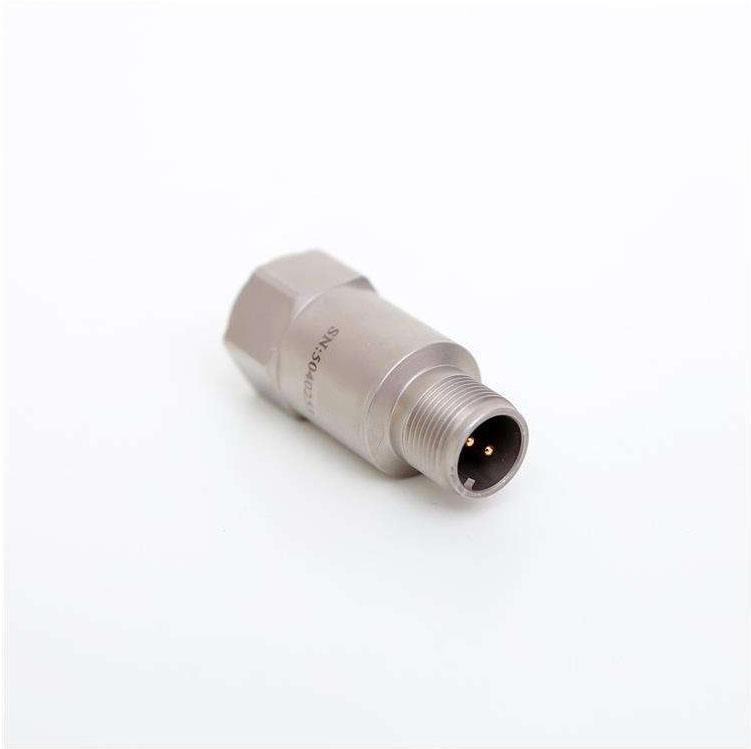Zinc is a silvery white metal with metallic luster. The melting point is 419 degrees Celsius, the density is 7.14g/cm3, and the standard electrode potential is -0.76V, which is one of the more active metals. The crystal structure of zinc is a close-packed hexagonal, showing an isomeric transformation as the temperature increases.
The appearance of zinc coating is dark white, and the coating density is generally 6.27g/cm3, which is the earliest and most used coating material in thermal spraying anti-corrosion construction. However, zinc coatings do not have corrosion resistance in sulfur or oxide contaminated air. Although the passivation of zinc is small, it is significantly passivated in the chromate solution to form a zinc chromate protective film.
The zinc raw material for thermal spraying requires high purity, and the purity requirement for anticorrosion is Zn99.995% or more, and the iron content is 0.001% or less. As the purity of the wire is at least 99.9% or more of zinc and 0.05% or less of Cu, in order to prevent the spray break line, the tensile strength is required to be greater than 150 MPa and the elongation is greater than 40%. The purity is super high, the finer the sprayed particles, the denser the coating surface. .
1) The zinc-aluminum alloy used for thermal spraying is mainly a zinc-aluminum binary alloy containing 5% to 25% of AI. When the aluminum content of the alloy is greater than 28%, many of the chemical and electrochemical properties of the alloy are similar to those of pure aluminum, and if used for thermal spray preservation, the cathodic protection is not well performed. On the other hand, since the increase in the aluminum content in the alloy makes the processing of the alloy wire difficult, it is currently commonly used as a binary zinc-aluminum alloy containing 85% zinc and 15% aluminum. The general grade of the alloy is Zn-AI15.
2) Zn-AI15 alloy
Zn-AI15 alloy has a melting point of 440 degrees Celsius and a coating density of about 5.0 g/cm3. Zn-AI15 zinc-aluminum alloy is a coating that is superior to pure zinc or pure aluminum in two-phase structure. The alloy coating has good corrosion resistance in many environments and provides effective protection for steel substrates. At present, there is also a commercial Zn-AI15 alloy thermal spray wire supply in China.
Zn-AI15 alloy coating has good mechanical properties, its strength and hardness are better than pure zinc coating and pure aluminum coating; electrochemical properties are between zinc and aluminum coating, and some of them advantage. The application of corrosion protection in steel structures is similar to that of zinc or aluminum. Therefore, the overall performance of the Zn-AI alloy coating is superior to that of the zinc coating and the ruthenium coating, and is a highly efficient electrochemical cathodic protection corrosion-resistant coating at normal temperature.

Concerned about surprises
Label: zinc alloy
Previous: Characteristics, structure and use of aluminum substrate Next: Application of magnesium in medicine
The vibration sensor(Vibration Transmitter) is one of the key components in the testing technology of Vibration Measurement. Its main function is to receive the mechanical quantity and convert it into a proportional electric quantity. Because it is also an electromechanical conversion device. So we sometimes call it a transducer, a vibration pickup, etc.
Commonly used vibration sensors are as follows:
1. Piezoelectric resonant
The piezoelectric sheet is used to receive the vibration signal, and the resonance frequency of the piezoelectric sheet is relatively high. In order to reduce the resonance frequency, it is realized by increasing the mass of the piezoelectric sheet vibrating body, and using a spring ball instead of an appendage to reduce the two resonance frequencies and enhance the vibration effect. Its advantages are high sensitivity and simple structure. However, the signal needs to be amplified and sent to a TTL circuit or a single-chip microcomputer circuit, but it is enough to use a triode single-stage amplification
2. mechanical vibration
In the traditional vibration detection method, after being vibrated, the spring ball vibrates at a reduced amplitude for a long time, and this vibration is easy to be detected by the detection circuit. The vibration output switch signal is determined by the output impedance and the resistance value of the matching output. According to the input impedance of the detection circuit, it can be made into a high-impedance output mode.
3. Micro Vibration Sensor
The mechanical vibration sensor is miniaturized, the vibration body is carbonized and sealed, and its working performance is more reliable. The output switching signal is directly connected with the TTL circuit and or the input circuit of the single-chip microcomputer, and the circuit structure is simple. The output impedance is high, and the quiescent working current is small.
Advantages of Vibration Sensors
1. Small size and light weight. It can be applied to some vibration test systems that are greatly affected by the additional mass.
2. It has a wider response frequency range of 4Hz-2000Hz than the magnetoelectric speed sensor, and the mechanical moving parts are not easy to damage
If you have any questions about the vibration sensor, please contact us, we will provide you with professional and timely answers.

Vibration Sensor,Accelerometer Sensor,Velocity Sensor,Accelerometer Vibration Sensor
Wuxi Winsun Automation Instrument Co., Ltd , https://www.jswxwinsun.com